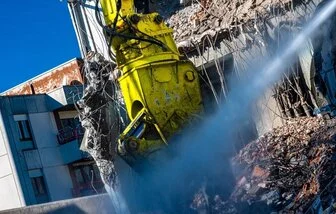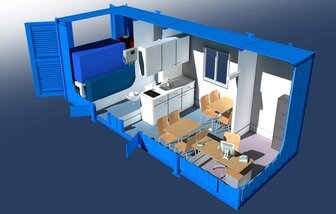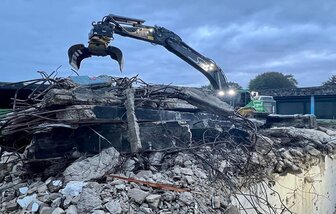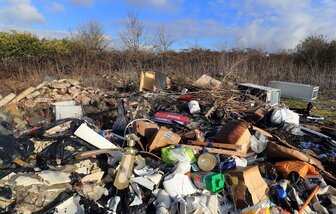Demolition Plans: Understanding and Creating an Effective Strategy
A well-crafted demolition plan is essential for the successful and safe execution of any demolition project. By following the steps outlined in this article and considering the various aspects of a demolition plan, you can ensure that your project is carried out efficiently, in compliance with regulations, and with minimal impact on the environment and surrounding structures.
Demolition plan overview
Learn how to create an effective demolition plan for your construction project. This comprehensive guide covers the key steps, including site assessment, hazard identification, safety measures, waste management, and more.
Ensure the successful and safe execution of your demolition project with a well-crafted plan.
A demolition plan is a crucial document that outlines the systematic and safe process of demolishing a structure or building.
It serves as a blueprint for the entire demolition project, ensuring that it is executed efficiently, with minimal risks to workers, the environment, and surrounding structures.

Developing a comprehensive demolition plan requires careful consideration of various factors. Here are the key steps to create an effective demolition plan:
1. Site Assessment
Before starting any demolition project, a thorough site assessment is essential. This involves evaluating the condition of the structure, identifying potential hazards, and assessing the impact on neighboring buildings and the environment. It is crucial to engage experienced professionals, such as structural engineers and environmental consultants, to conduct this assessment.
2. Identify Hazards
During the site assessment, potential hazards should be identified, such as asbestos, lead-based paint, or hazardous materials. These must be properly managed and disposed of in compliance with local regulations. Adequate measures should also be taken to protect workers and the surrounding community.
3. Develop a Sequence of Operations
Creating a sequence of operations is vital for a smooth and efficient demolition process. It involves determining the order in which different parts of the structure will be demolished. This sequence should consider factors such as the stability of the remaining structure, the availability of equipment, and the safety of workers.
4. Establish Safety Measures
Ensuring the safety of workers and the public is of utmost importance in any demolition project. The demolition plan should include detailed safety measures, such as personal protective equipment (PPE) requirements, fall protection systems, and emergency procedures. Regular safety inspections and ongoing safety training for workers should also be incorporated into the plan.
5. Waste Management and Recycling
Proper waste management and recycling are essential components of a sustainable demolition plan. The plan should outline procedures for separating and disposing of waste materials responsibly. Whenever possible, salvaging and recycling materials should be prioritized to minimize environmental impact and promote sustainability.
6. Environmental Considerations
Demolition projects can have environmental implications, such as noise pollution, dust emissions, and potential soil and water contamination. The demolition plan should address these concerns and propose measures to mitigate their impact. This may include using dust suppression techniques, noise barriers, and implementing erosion control measures.
7. Legal and Regulatory Compliance
A well-prepared demolition plan should adhere to all relevant local, state, and federal regulations. This includes obtaining the necessary permits and licenses, complying with noise restrictions, and following guidelines for the safe handling and disposal of hazardous materials. Failure to comply with these regulations can result in legal consequences and delays in the project.
Once you have created a comprehensive demolition plan, it becomes a vital reference document throughout the demolition project. Here are some key actions to take with a demolition plan:
1. Communication and Coordination
Share the demolition plan with all relevant stakeholders, including contractors, workers, and local authorities. This ensures that everyone involved in the project understands the objectives, procedures, and safety measures outlined in the plan. Regular communication and coordination among all parties are essential for a successful demolition project.
2. Implementation and Monitoring
Follow the demolition plan meticulously during the execution of the project. Regularly monitor and assess the progress to ensure that the plan is being implemented correctly. Any deviations or unforeseen issues should be promptly addressed and documented to maintain the integrity of the project.
3. Document and Archive
Keep a record of all activities, modifications, and incidents related to the demolition project. This documentation is important for future reference, compliance audits, and potential legal requirements. Archiving the demolition plan and associated documents provides a valuable resource for any future demolition projects.
4. Learn from the Experience
After completing the demolition project, evaluate the effectiveness of the plan and the overall project execution. Identify any lessons learned and areas for improvement. This feedback can help refine future demolition plans and enhance the efficiency and safety of subsequent projects.
What is demolition?
The process involves Rotational hydraulic shears and rock-beakers attached to specialist excavators are also used to cut or break through wood, cut steel and crush concrete which reduces the structure to a rubble
Securing your demolition project
Implementing robust security measures, such as perimeter fencing, access control, signage, surveillance systems, and proper lighting, can significantly reduce the
Demolition hazards
If a demolition project is well planned the risks of injury and death can be minimised. It should be emphasised that the planning and execution of a demolition project should only be done by appropriately competent persons.
Notification of intended demolition Section 80
If your considering demolishing an existing building you will need to submit a demolition, Section 80 Notice together with your (RAMS) to your local authority according to section 80
Welfare facilities
Welfare facilities are an essential component of any demolition project. By providing suitable facilities, employers prioritize the well-being and safety of their workers, leading to increased
Demolition plant
Demolition plant is essential in the construction industry, as they ensure the safe and efficient removal of structures. By following strict guidelines and regulations, these plants prioritise safety, efficiency, and sustainability.
Utilities disconnection
Terminating utilities at the boundary is a critical step in the demolition process. It ensures the safety of the demolition crew and the surrounding environment, helps comply with regulations, prevents damage to utilities
Internal soft strip
Soft strip demolition is a crucial process that involves the removal of the internal structure of a building, making it ready for demolition or refurbishment. This process includes the careful removal of various materials.
Planning your demolition project
Learn how to create an effective demolition plan for your construction project. This comprehensive guide covers the key steps, including site assessment, hazard identification, safety measures, waste management, and more.
Managing asbestos
Learn about the dangers of asbestos, its different types, and where it can be found. Understand the health risks associated with asbestos exposure and the importance of proper testing and safe removal. Protect yourself and others from the harmful effects of asbestos.
Dealing with waste
Learn about waste management practices in demolition projects and the legal requirements that must be followed. Understand the types of demolition waste, effective waste management practices, and the laws and regulations governing waste management
Hazardous waste liquids
Hazardous liquids in demolition projects. Understand the importance of identifying, segregating, and properly disposing of hazardous waste. Follow the guidelines the safe handling, storage, and disposal of hazardous
Ready to start your project ?
Let's Work Together
Please complete the form below and someone from the Total team will be in touch.












